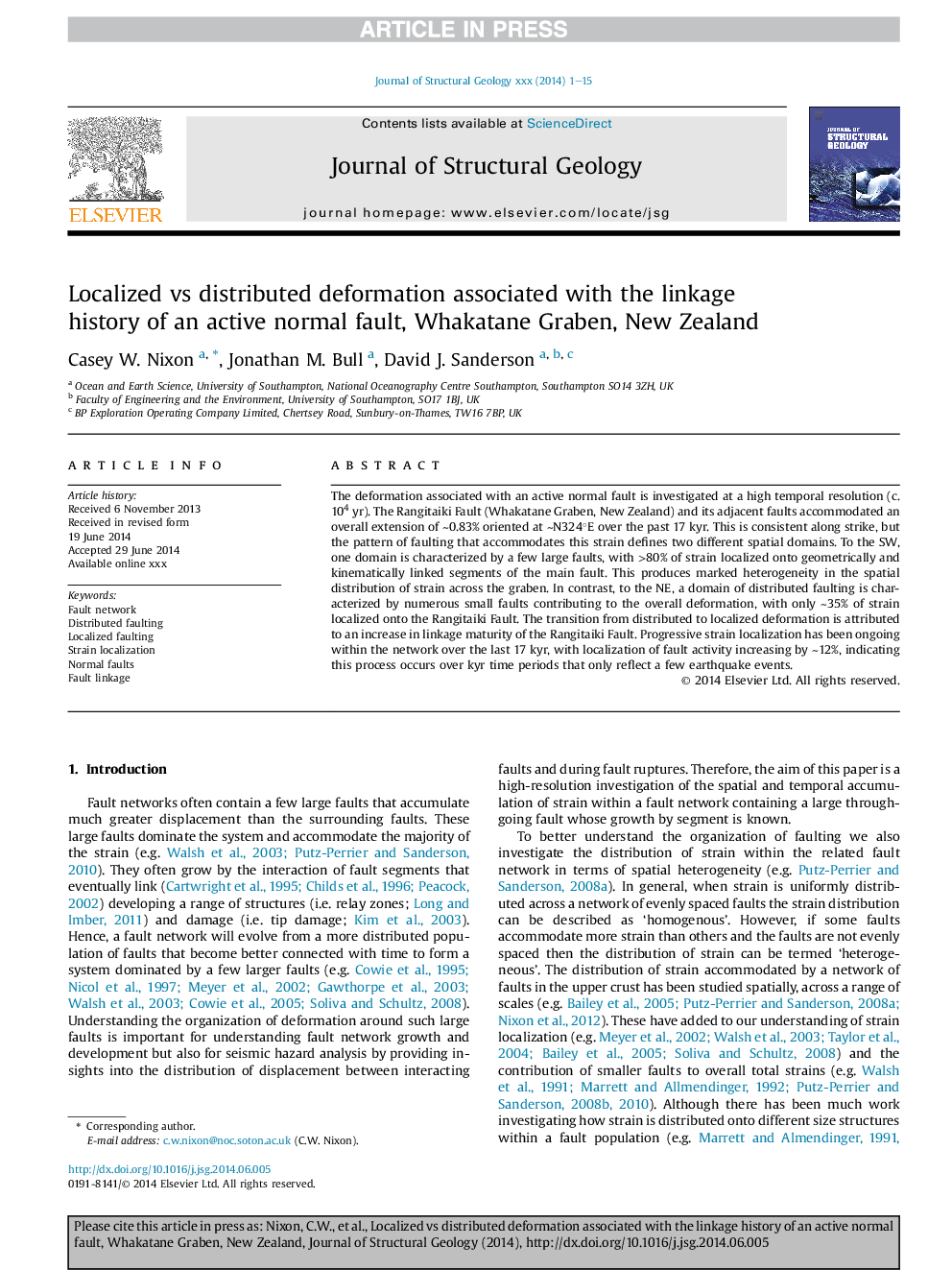| Article ID | Journal | Published Year | Pages | File Type |
|---|---|---|---|---|
| 6444862 | Journal of Structural Geology | 2014 | 15 Pages |
Abstract
The deformation associated with an active normal fault is investigated at a high temporal resolution (c. 104 yr). The Rangitaiki Fault (Whakatane Graben, New Zealand) and its adjacent faults accommodated an overall extension of â¼0.83% oriented at â¼N324°E over the past 17 kyr. This is consistent along strike, but the pattern of faulting that accommodates this strain defines two different spatial domains. To the SW, one domain is characterized by a few large faults, with >80% of strain localized onto geometrically and kinematically linked segments of the main fault. This produces marked heterogeneity in the spatial distribution of strain across the graben. In contrast, to the NE, a domain of distributed faulting is characterized by numerous small faults contributing to the overall deformation, with only â¼35% of strain localized onto the Rangitaiki Fault. The transition from distributed to localized deformation is attributed to an increase in linkage maturity of the Rangitaiki Fault. Progressive strain localization has been ongoing within the network over the last 17 kyr, with localization of fault activity increasing by â¼12%, indicating this process occurs over kyr time periods that only reflect a few earthquake events.
Related Topics
Physical Sciences and Engineering
Earth and Planetary Sciences
Geology
Authors
Casey W. Nixon, Jonathan M. Bull, David J. Sanderson,
